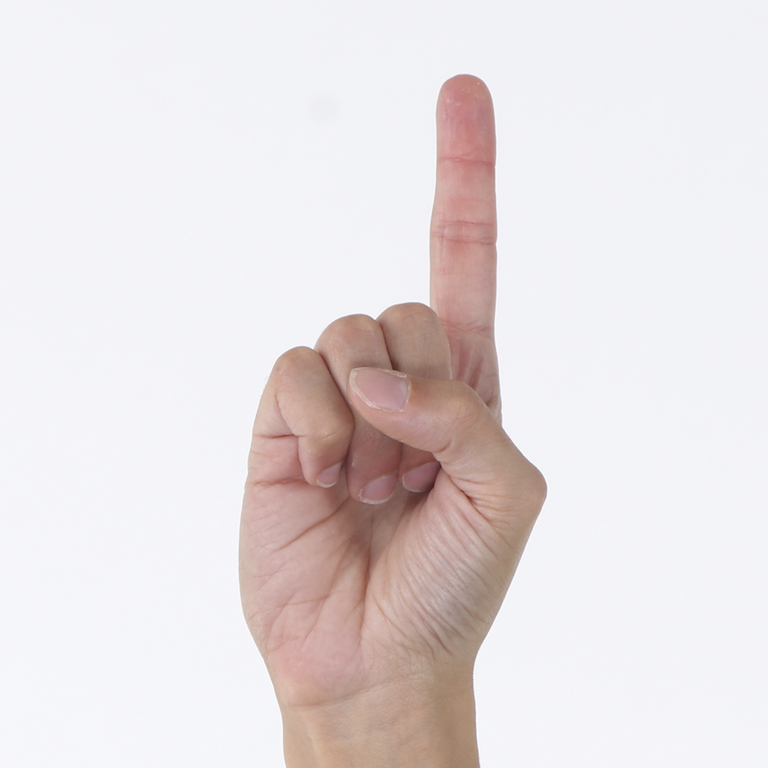Area 4. Morphology
Introduction
Morphology studies the internal structure of signs. Sign formation can occur in four ways: compounding, derivation, inflection, classifiers.
Compounding is a very productive sign formation process (Rodríguez González, 1992, p. 161). In Spanish Sign Language (LSE) there are native compounds, specific to LSE, such as WEEKEND, which is the result of the combination of the signs SATURDAY and SUNDAY. There are also loan compounds that have influence from other languages. For example, LANGUAGE (LENGUAJE, meaning linguistic capacity) is formed with LANGUAGE (LENGUA, meaning speech) followed by the dominant hand with the little finger extended drawing a letter j in the air. The written form of the j is an influence of the Spanish word lenguaje.
Derivation is the formation of a new sign from a morpheme. DOOR is produced by modifying (in this case, reducing and repeating) the action CLOSE-THE-DOOR (Morales López et al., 2002). Through derivation, the new sign can be of a different category to the original morpheme, as in the example of DOOR, which is a name originated from the action of CLOSE-THE-DOOR. Derivation can also occur through non-manual markers. In LSE, to intensify that something is extremely painful, we modify the sign PAINFUL by frowning the eyebrows and nose.
Through inflection, the sign changes depending on various grammatical contents, such as number, time, etc. In inflection, the new sign and the original sign share the same grammatical category (part of speech). In LSE there is verbal inflection and nominal inflection.
In verbal inflection, the verb identifies, for example, who does the action and who receives it through its directional movement. Thus, the movement of the verb begins in the subject and ends in the object, as occurs with the verb DECEIVE (Costello, 2016, p. 180).
In (1) the verb moves from the place where I am to the place where you are. In the case of DECEIVE, in addition to the directional movement, the orientation of the palm of the hand also indicates agreement, since the palm is directed towards the object. In (1) the palm of the hand is oriented towards you.
Inflection also occurs in nouns (nominal inflection). For example, a very common resource to express the plural of a name in LSE is movement repetition, as in PERSON-pl (people) (Rodríguez González, 1992, p.267).
Classifiers are a type of morpheme that represent some physical characteristic of its referents (Morales López et al., 2002). The handshape, therefore, reproduces some iconic features of the referents. As we saw in the lexicon section, classifiers are part of the non-core lexicon. In sign languages, classifiers are related to verbs, producing predicate classifiers. Classifiers are bound morphemes (Herrero Blanco, 2009, p. 151), they always appear with other morphemes.
In (2) the configuration refers to a person (a long entity). The predicate classifier indicates that someone is coming towards me. Configuration
configuration refers to a person (a long entity). The predicate classifier indicates that someone is coming towards me. Configuration is an entity classifier, because it refers to the complete referent, to the whole person (Chapa, 2001). In future contents of the GramLSE we will also see bodypart and handle classifiers.
is an entity classifier, because it refers to the complete referent, to the whole person (Chapa, 2001). In future contents of the GramLSE we will also see bodypart and handle classifiers.
Villameriel García, S. (2022). Morphology: Introduction. In S. Villameriel García (Ed.), Gramática de la Lengua de Signos Española (GramLSE) / Grammar of Spanish Sign Language (GramLSE). Real Patronato sobre Discapacidad-Centro de Normalización Lingüística de la Lengua de Signos Española. Retrieved Month DD, YYYY, from https://cnlse.es/es/recursos/gramlse/ingles/index/morphology
- Next: verbal inflection
- References
- Spanish sign language and written Spanish version
- Videoglossary (in Spanish sign language and written Spanish)




